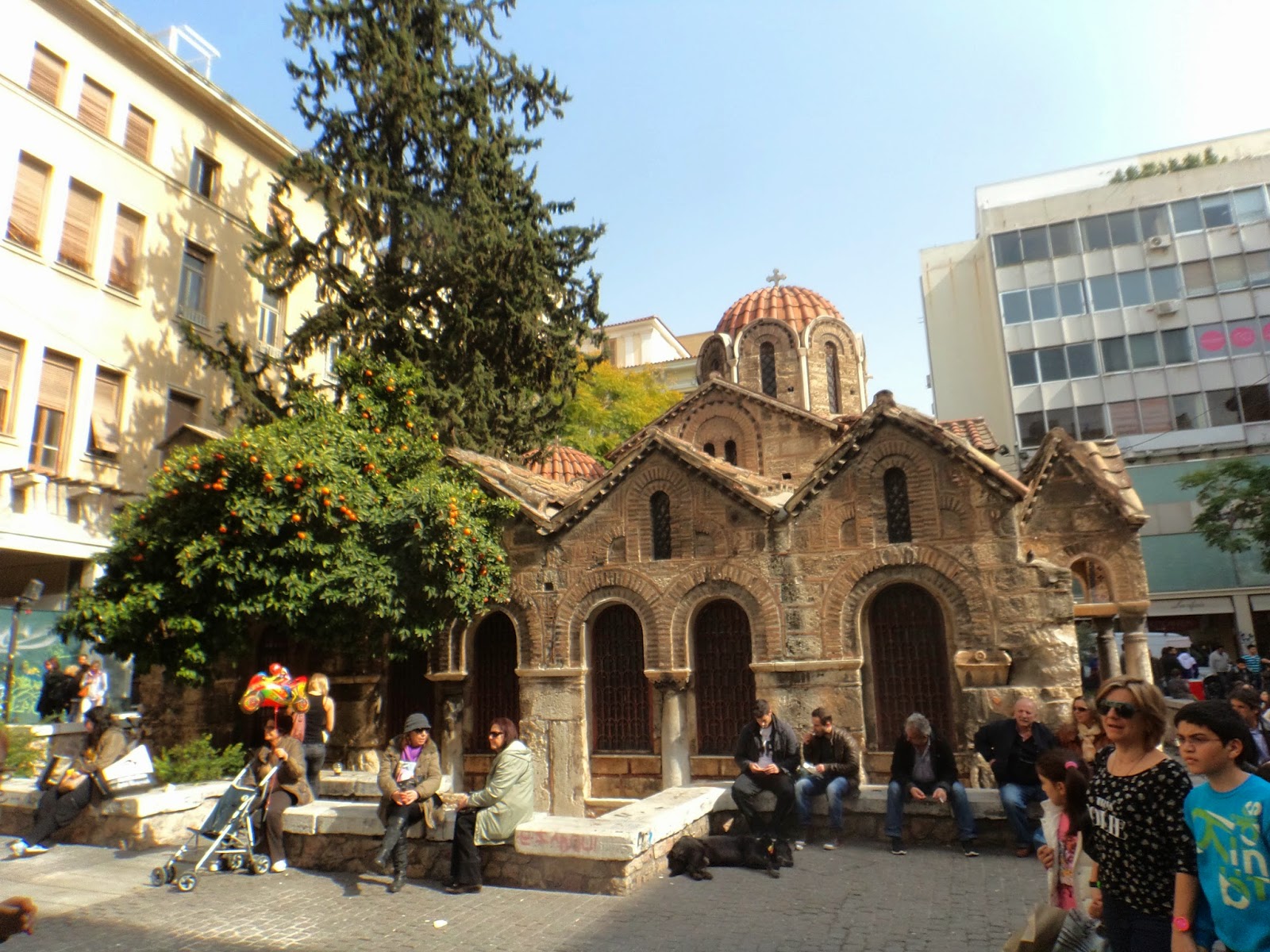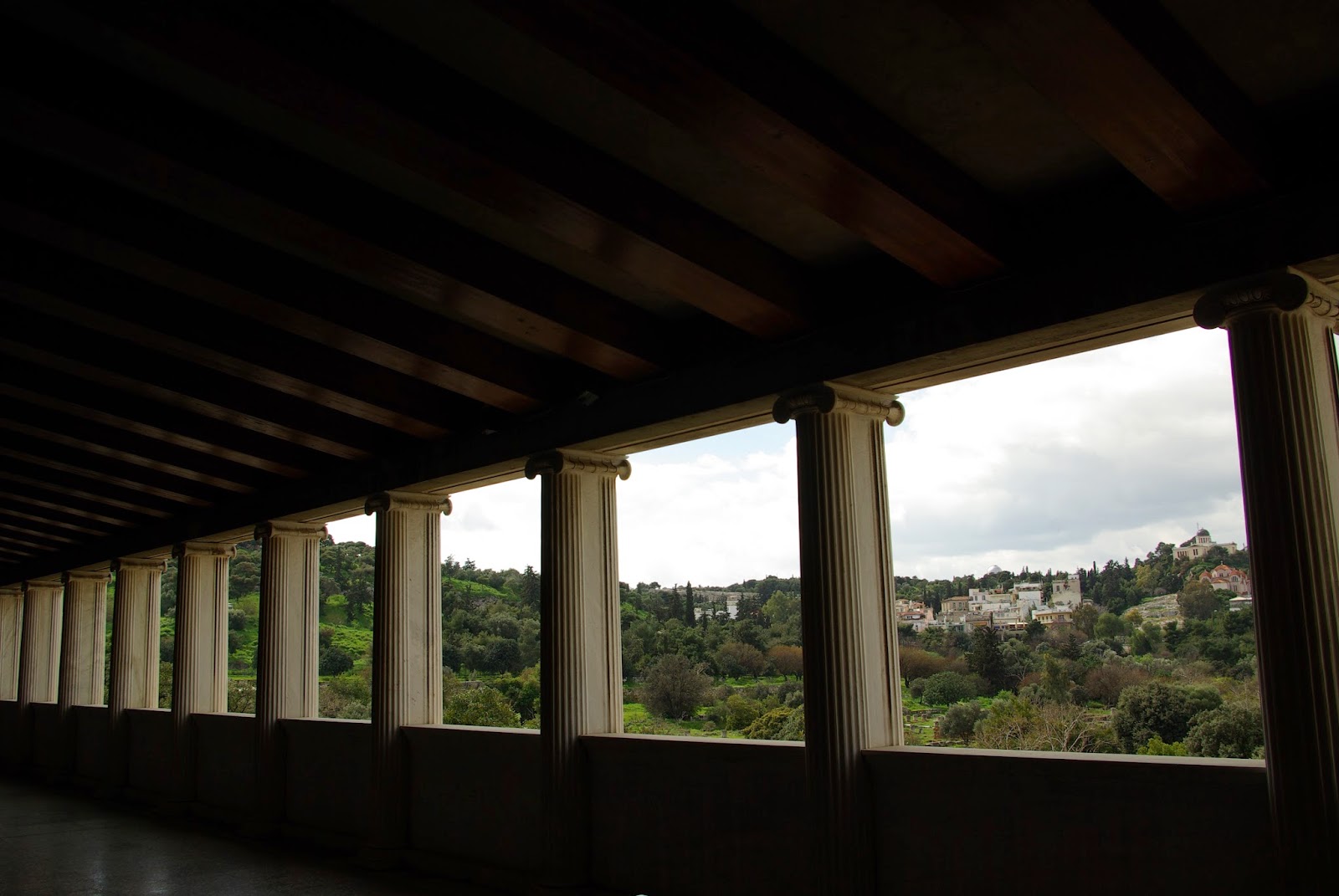Since our house is less than an hour from the center of
Athens by public transportation, we will be taking many trips to Athens, so I
am likely to be doing multiple posts on the city. We have already travelled to Athens twice and
feel that it would take months in the city to explore all of its wonders. It
has archaeological sites and artifacts dating back to the Neolithic, about 6800
BC. It has extensive structures that date from the 8th and 9th
century BC through the modern era.


Our first trip into Athens we took the bus from Rafina to
Athens until it stopped. We did not
really know where it would end. As it turned out, it stopped about 2 km north
of the city center and the Acropolis. Using our handy-dandy iPhones, we mapped
our way to the Acropolis and took off for a walk. We had decided not to bring a
stroller for the kids, because we have found the sidewalks in Greece to be
variable. This meant that we soon had two kids riding on our shoulders. About
half way along the walk, we decided to stop for a morning café. The place we
chose was outside of a nice large building that obviously looked
important. After asking our waiter, we
found out that we had landed at the National Archaeological Museum of Athens,
which was one of the sites that we wanted to see. You might think that we
should have been able to figure this out from the maps, but most of the maps
(including the iPhone map and Google Maps were mostly in Greek and we are still
figuring out the alphabet). The museum was amazing, but the kids where not so
psyched about walking through room after room of artifacts that they were not allowed
to touch, so I took them outside to play with the pigeons so that Karla could
enjoy the museum in some peace.

From there, we walked the city streets towards the Acropolis
which you could see on the hill through the city buildings. We passed many nice
shopping streets and many old churches. The number of ancient buildings in
Athens is amazing and the way that they are integrated into the modern city
landscape is interesting. L2 was getting very tired and actually fell asleep
with me carrying him, so we stopped on a stone wall north of the Byzantine
Church of Panaghia Kapnikarea on Ermou Street.
This is one of the oldest churches in Athens and was built in the 11
th
century. It is surrounded by modern architecture and lots of shops which makes
an interesting dichotomy with the church.


We passed through the Monastraki area (which has a handy
metro station which we started to use as our access point after that). This
square has an old Pantanassa church monastery from the 10
th century
in it (for which the square is named). This area is the junction of many small
city streets with cafés along the alleyways and a flea market off of one side.
It is also very close to Hadrian’s Library and the access to the Ancient Agora.


The Ancient Agora was the central public space of ancient
Athens and is thought to have been built in the 6
th century BC. It
is located at the base of the Acropolis with great views up to the Parthenon
and the temple Erechtheion which was dedicated to both Athena and Poseidon.


Many sculptures are housed in the Stoa of Attalos in the
Agora which was originally built in the 2
nd century BC. This
original building was also destroyed by the Heruli (an East Germanic Tribe) in
267AD when they sacked Athens and was reconstructed between 1952 and 1956.

There are many street artists throughout the city. They
produce all types of art from drawings of you that they will do while you wait
to Byzantine icons that are printed on paper made by the artist and aged and
illustrated.
There is a small scale tourist train that goes around the
acropolis in about one hour and leaves form Constitution square. I think we will take this at some point in
the future as L1 would really enjoy the train ride and it is an easy way to get
around to see the sites.

The old royal palace was built by King Otto of Greece in
1843 and today houses the Hellenic parliament. It faces Syntagma Square which
has another very handy bus stop. The building has a ceremonial guard which has
a very elaborate changing of the guard ceremony.
We finally found our way through the winding alleys to a
road that went up to the Acropolis and passed by the Roman Agora. Construction
of the Roman Agora started in 15BC.


The Parthenon is an amazing building that was originally
built in the 5
th century BC. The Ottoman Empire used the building as
an ammunition dump and the building was partly destroyed when these munitions
where ignited by Venetian bombardment in September 1687. In 1975 the Greek
government started a concerted effort to restore the Parthenon. That work
continues today using marble from the original quarry which stands out as a
bright white, but will weather to a similar tan color as the aged stones.
Previous restoration work had used iron bars to support some of the structure,
but the resulting oxidation and rusting caused the iron to expand which has
actually caused more damage to the original stone. Any modern reinforcement is
made of titanium.

From the top of the Acropolis, you can look down in to the
Odeon of Herodes Atticus which was completed in 161 AD. It was originally a
covered structure, but the building and roof were destroyed by the Heruli in
267AD. It was renovated in 1950 to seat 5,000 people and is used today as an
outdoor theater for concerts and plays.
I have been impressed with the graffiti throughout Greece
and other locations in Europe. I had always thought of graffiti as a US art
form, but it is interesting to see the ancient structures in Europe next to
these modern graffiti paintings. I was also impressed that much of the original
archaeological work throughout Athens was instigated by the expansion of the
metro system. The excavations for the metro unearthed many archaeological sites
and created an interesting landscape that is a combination of ancient
structures, more modern buildings, modern metro rails, and recent graffiti in
bright colors.

